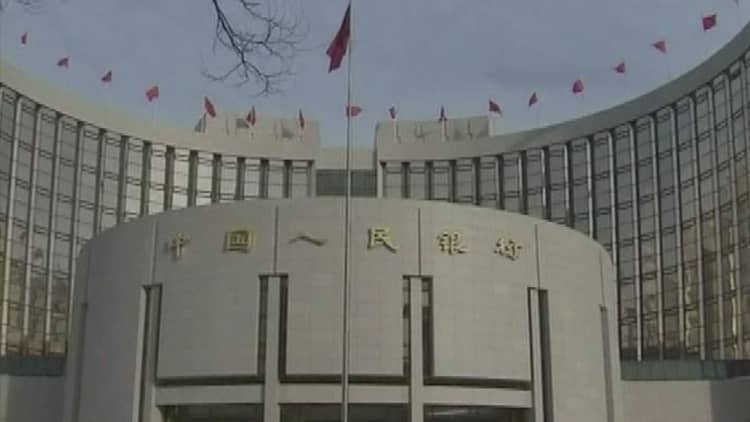
China's foreign currency reserves fell for the fourth consecutive month in February, although the slower pace of decline suggests recent stability in currency markets eased pressure on the central bank to intervene aggressively
China's reserves totaled $3.20 trillion at the end of February, in line with Reuters expectations but dropping from $3.23 trillion the previous month, the People's Bank of China (PBOC) announced on Monday.
The country's foreign exchange reserves have come under close scrutiny in recent months for clues on the size of capital outflows as well as the ability of policymakers to support the yuan, or renminbi (RMB), as it's known.
The renminbi has lost nearly 3 percent against the greenback since the PBOC's historic devaluation last August, and market players widely expect prolonged declines. Goldman Sachs for example, is betting the yuan to fetch 7 per dollar by year-end, from 6.5 currently.
The prospects of further declines in the currency as well as concerns over economic growth have spurred people and companies to send money overseas. This selling of the yuan has forced the central bank to withdraw funds from its massive war chest to prop up the currency's value, thus sparking the vicious cycle between reserves and outflows.
Beijing logged $100 billion per month in average currency outflow during November, December and January, with the yuan declining 1.8 percent against the greenback in that period.
"In our view, recent outflows are not a symptom of panic but more a sign of Chinese companies and residents' expectations of a short-term drop in the value of the RMB," asset management firm AllianceBernstein (AB) explained in a report.
To be fair, seasonal factors also impact the reserve-outflow relationship. Dollar buying was likely exacerbated last month by Chinese travelling abroad for the week-long Lunar New Year holiday.
Recently however, the renminbi has broken its depreciation trend, having climbed nearly 1 percent higher against the greenback over the past month, making Monday's data especially significant.
"If the preference of Chinese companies and residents is to switch into dollars both when the dollar is appreciating against the RMB and when the dollar is depreciating against the RMB, Beijing has a real problem," AB said.
"Generically, when an asset class (RMB in this instance) is getting more valuable and (still) the impulse is to sell... that is a real problem. In fact, that is capital flight."
The world's second-largest economy does not release official outflow data on a monthly basis so when it comes to assessing how much money left the country, private economists use foreign exchange reserves data to get a handle.
Julian Evans-Pritchard, an economist at Capital Economics, said in a note that the reserves data implied net capital outflows of $65 billion in February, compared with outflows worth $135 billion in January.
"The upshot is that the combination of tighter capital controls along with efforts by the PBOC to better communicate its intention not to devalue the renminbi seems to be bearing some fruit," he said.
However, should outflows accelerate instead, that's extremely worrisome, AB pointed out.
"The best explanation [for higher outflows] would be that Chinese residents and companies have stopped listening to short-term volatility in RMB and started to hear the sucking noise as liquidity drains out of the PBOC's (admittedly) very large bathtub."
Under that scenario, any possible policy responses from the PBOC may be ineffective.
"Policy tweaks in a functioning export economy cannot trump 1.3 billion people who decide that they simply want to get money out," AB warned.
In fact, the PBOC just resumed its easing cycle last week, which could increase the chances of outflows. Its 0.5 percentage point reserve ratio requirement cut is set to weaken the currency further, further motivating investors to pull funds out of the country in search of better returns elsewhere.


